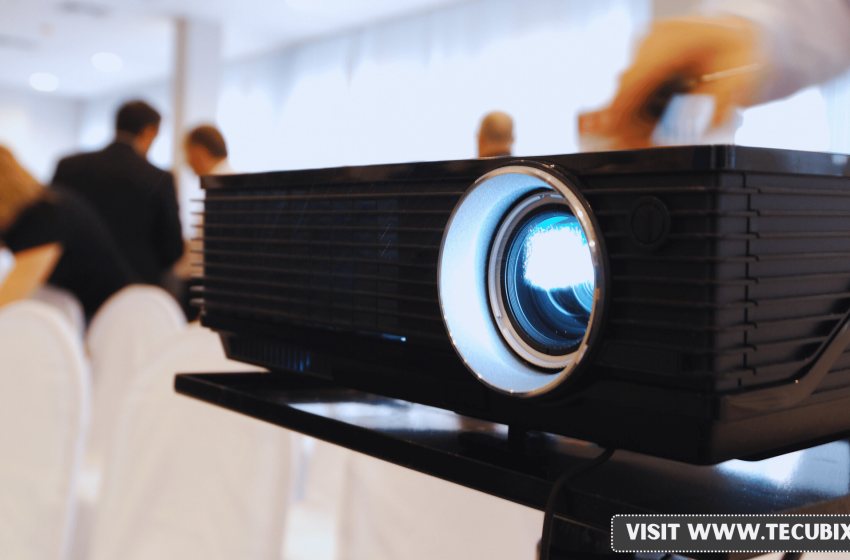How to Choose Among the Many Types of Projectors

With an array of projectors available on the market, selecting the right one for your specific needs can feel overwhelming. Whether you’re setting up a home theater, preparing for a business presentation, or looking for a portable solution, understanding the different types of projectors and their features is essential. This guide will help you navigate the choices, ensuring you find the perfect projector for your situation.
1. Understand Your Needs
Before diving into the specifics of projector types, it’s crucial to identify your primary use case. Here are a few questions to consider:
- What will you be using the projector for? (Home theater, gaming, business presentations, education, etc.)
- What size space will you be projecting in? (Small room, large auditorium, outdoor, etc.)
- How much ambient light will there be? (Bright rooms, dark environments, etc.)
- How portable does the projector need to be? (Fixed location vs. frequent transport.)
Defining your needs will significantly narrow down your options.
2. Know the Different Types of Projectors
a. DLP Projectors (Digital Light Processing)
DLP projectors use a digital micromirror device (DMD) to create images, providing high contrast and vibrant colors.
Pros:
- Excellent for fast-moving content, ideal for gaming and action movies.
- Generally compact and portable.
Cons:
- Some users may experience the “rainbow effect,” which can be distracting.
- Brightness can vary depending on the model.
Best For: Home theaters and portable business presentations.
b. LCD Projectors (Liquid Crystal Display)
LCD projectors utilize three liquid crystal panels to create bright and colorful images, making them versatile for various applications.
Pros:
- Excellent color accuracy and brightness, even in well-lit environments.
- Affordable options available.
Cons:
- Bulky compared to DLP projectors.
- May show the “screen door effect,” where pixelation is visible.
Best For: Classrooms, business presentations, and home entertainment.
c. LED Projectors (Light Emitting Diode)
LED projectors use LEDs as their light source, making them energy-efficient and long-lasting.
Pros:
- Long lifespan (up to 30,000 hours) and low maintenance.
- Compact and lightweight, ideal for portable use.
Cons:
- Generally lower brightness compared to DLP and LCD projectors.
- May not perform as well in bright environments.
Best For: Casual viewing, outdoor use, and small home setups.
d. Laser Projectors
Laser projectors use laser technology to deliver high-quality images with outstanding brightness and color accuracy.
Pros:
- Exceptional brightness, suitable for large venues and well-lit rooms.
- Longer lifespan and less maintenance than traditional bulb projectors.
Cons:
- Generally higher price point compared to other types.
- May require a more complex setup.
Best For: Large events, auditoriums, and professional presentations.
e. LCoS Projectors (Liquid Crystal on Silicon)
LCoS projectors combine the benefits of DLP and LCD technologies, offering high resolution and superior color depth.
Pros:
- High resolution and smooth gradation, minimizing pixelation.
- Excellent color fidelity.
Cons:
- Typically more expensive than other projector types.
- May be bulkier.
Best For: High-end home theaters and professional cinematic presentations.
f. Short Throw and Ultra-Short Throw Projectors
These projectors are designed to project large images from a short distance, making them perfect for small spaces.
Pros:
- Space-saving design, ideal for small rooms.
- Reduces shadows cast during presentations.
Cons:
- Limited range and may require specific setups.
- Generally more expensive than standard projectors.
Best For: Small classrooms, home theaters, and tight office spaces.
3. Consider Key Features
When choosing a projector, keep the following features in mind:
-
Brightness: Measured in lumens, brightness is crucial for visibility in various lighting conditions. Higher lumens are better for bright environments.
-
Resolution: Higher resolution (e.g., 1080p, 4K) provides clearer images, which is especially important for detailed graphics and video content.
-
Contrast Ratio: A higher contrast ratio results in deeper blacks and brighter whites, enhancing image quality.
-
Connectivity Options: Ensure the projector has the necessary ports (HDMI, USB, VGA) to connect to your devices.
-
Portability: If you plan to move the projector frequently, consider its weight and size.
4. Set a Budget
Projectors come in a wide range of prices, so it’s essential to set a budget. Determine how much you’re willing to spend and prioritize features that matter most to you. Keep in mind that while higher-priced models may offer superior performance, there are also affordable options that provide excellent value for specific needs.
5. Read Reviews and Test Before You Buy
Before making a final decision, read reviews from other users to understand their experiences with the projector models you’re considering. If possible, test the projector in-store to see the image quality firsthand and assess its usability.
Conclusion
Choosing the right projector involves understanding your specific needs, familiarizing yourself with the different types available, and considering key features. By defining your requirements and setting a budget, you can confidently select a projector that enhances your viewing experience, whether for home entertainment or business use. With the right projector, you’ll enjoy stunning visuals and make the most of your presentations and movie nights.

